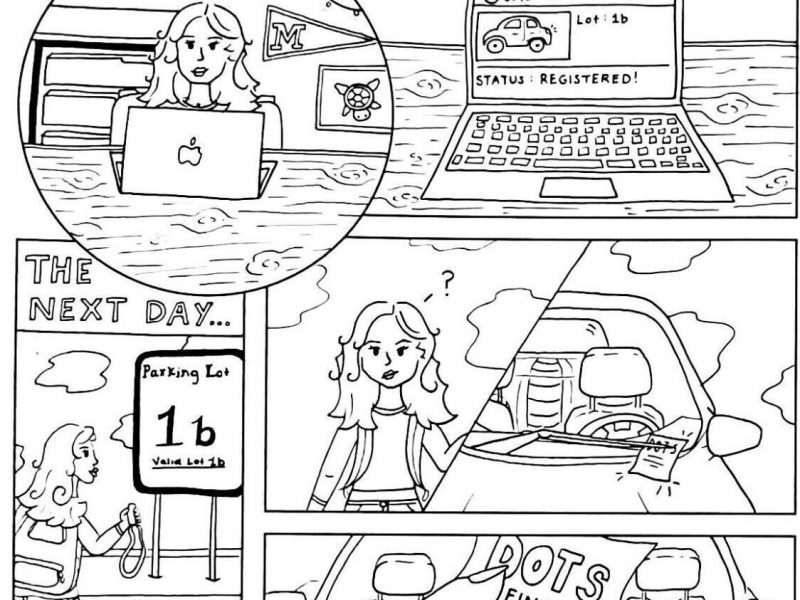Views expressed in opinion columns are the author’s own.
The last time I checked, Asian and Asian Americans are people of color.
However, University of Maryland’s President Darryll Pines suggested otherwise during a presentation to the University Senate on enrollment and admission earlier this month. The graphic presented had rows titled “Students of color minus Asians” and “White or Asian students.”
While the university said the graphic’s intention was to reveal “student populations that have historically represented 11 percent or less of our campus community,” in a statement, the impact of this data organization harms this campus’ Asian and Asian American communities.
In a visual and public way, the university separated Asian Americans from other minority groups, categorizing them with white Americans. This separation is, unfortunately, nothing new. Sensitive data organization has the power to prevent the promotion of the model minority myth for the Asian American community.
The model minority myth, a stereotype that emerged during the civil rights movement, does just this: It separates and characterizes Asian Americans as a monolith group that is polite, quiet, abiding, hardworking and successful.
This myth is a harmful tool of white supremacy because it promotes the idea that racism can be overcome with hard work and polite attitudes. During the civil rights movement, white elites invalidated claims of racism and social injustice by using Asian Americans as a “success” story. This sentiment also invalidates experiences of racism and inequality against Asian Americans because mainstream society wants to focus on the Asian American success story, rather than Asian Americans who are exploited under work conditions.
Lack of specificity or misnaming data can be harmful to how our society understands, interacts and interprets a community’s experience. Many people rely on statistics, data and other sciences as proof of fact and truth. So when data is displayed in a harmfully biased way, different communities — especially those already marginalized — are put at risk.
Despite its quantifiable nature, the way we organize data has the power to influence biased behaviors and racist policies. When it isn’t done meticulously, data organization can further harm the Asian American community.
The effects of inaccurate data organization take many forms. For example, there are data visualizations promoting Asian Americans as a monolithic group, when they are in fact composed of diverse ethnic groups. Aggregated data for Asian Americans preserve ethnic-based inequities within sub-groups. However, data disaggregation aims to correct this myth.
Data disaggregation separates compiled information into smaller units. Disaggregating Asian American data reveals the cultural heterogeneity of the groups’ experiences.
For example, the model minority myth hides economically vulnerable Asian Americans. Existing aggregated data that groups Asian Americans as a monolithic group reveal that the medium education level of Asian Americans is higher than non-Asian Americans and their average unemployment rates are lower. However, a recent disaggregated report reveals there is a gap in median net worth between the Japanese, Asian Indians and Chinese, versus Filipinos, Vietnamese and Koreans in Los Angeles.
These accurate disaggregated data collections are necessary to develop public policy that responds to marginalized groups that need it the most. For instance, data reveals that only 14 percent of Asian American Pacific Islanders, or AAPI, lack health insurance. However, disaggregating this data shows that 8 percent of Japanese Americans lack health insurance, compared to the 27 percent of Korean Americans. This disaggregated data has the power to change the course and specificity of policies to impact and help the right communities.
Data organization does not only impact society’s mindset and behaviors, but it can also affect the concrete policies that can have lasting effects on communities. Therefore, accurate, meticulous and sensitive visualization is necessary for the analysts to interpret the data.
The university’s intention may have been to shed light on underrepresented populations on campus, but there is a way to relay that point without misrepresenting people of color. In the long list of problematic instances where Asian Americans are separated from other minority groups, I would hope not to find this university’s name.
In a space where Asian Americans are celebrated through cultural organizations and the Asian American Studies Program, how does the university manage to invisibilize the Asian American community? This shows a disconnect between the university’s intention to be diverse and inclusive and the university’s action in data categorization, an act that is harmful to the same diverse spaces they attempt to promote.
Lei Danielle Escobal is a sophomore American studies and sociology major. She can be reached at leidanie@terpmail.umd.edu.



